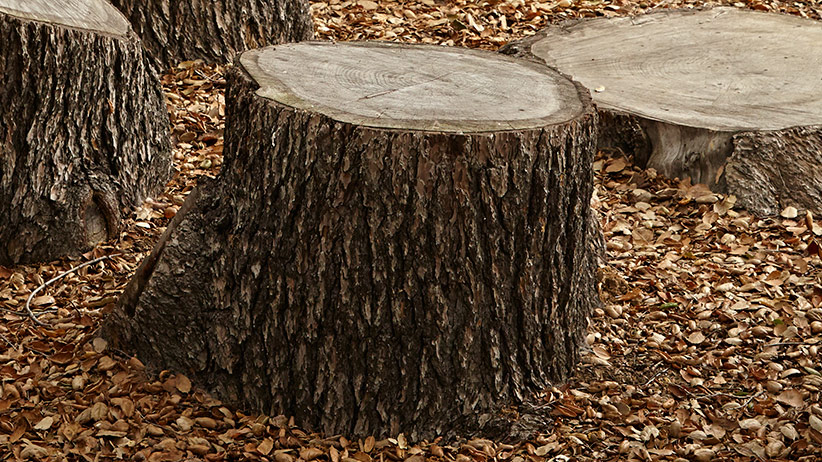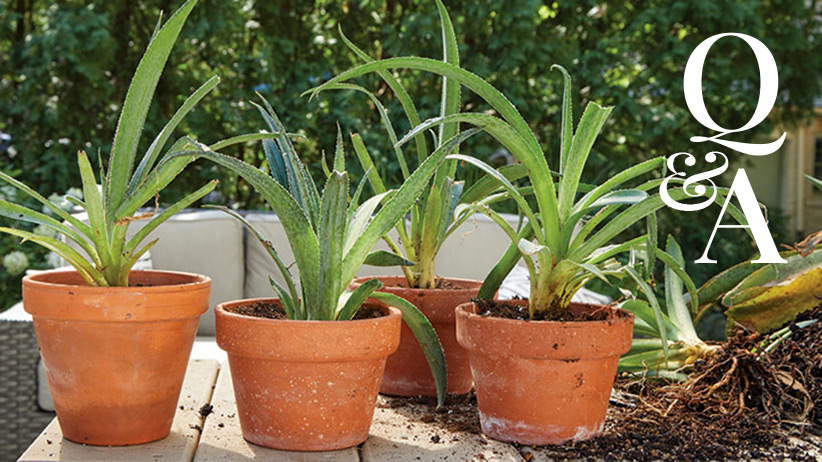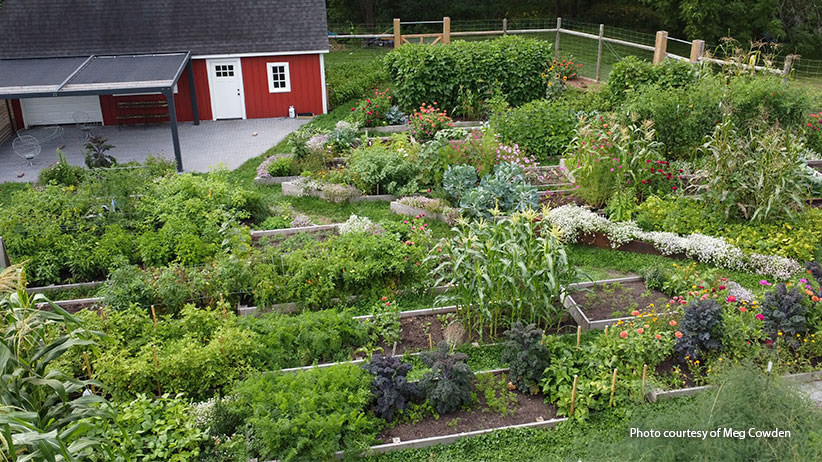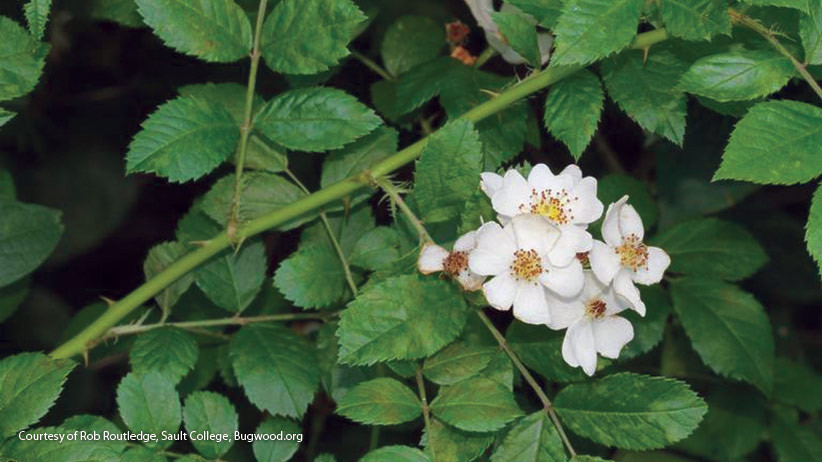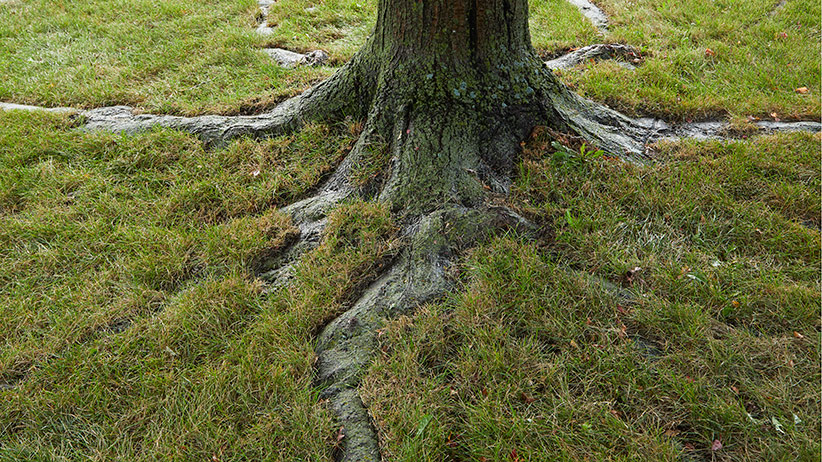

What you need to know about garden compost
Compost has long been considered gardener’s gold — it's a nutrient-rich organic matter that improves almost any type of soil. Add compost to your soil every year and your plants will thrive. Making your own compost at home not only saves you money but also reduces the amount of food and garden waste you may be sending to the landfill, where the type of decomposition that takes place can increase methane being released into the atmosphere. Let these materials break down at home using the right methods and you won't be contributing to these problems. Here's everything you need to know to start composting for your garden.
The best place for a compost bin or pile
You should place a compost bin or pile in a shady spot that is protected from winds that might blow debris out of an open pile. Some sun is fine, but full hot sun will dry the pile or bin quickly and you’ll need to check it for moisture regularly. Avoid locations where water doesn’t drain well or the pile will stay too wet. Most people like their composting to be conveniently located, but not conspicuous.
You Might Also Like:
How to Make Compost Tea
How to Build a Keyhole Garden Bed
6 Organic Garden Products to Use in Your Garden
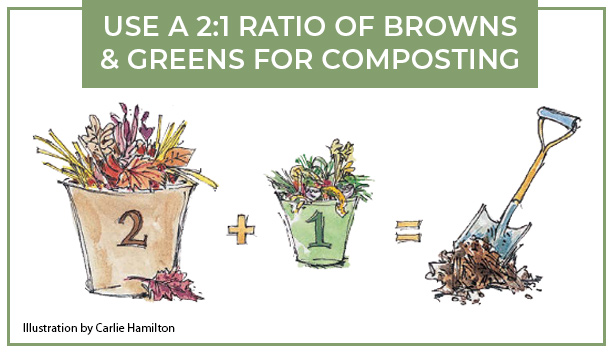
A compost pile should consist of four basic ingredients: Browns, greens, water, air
An open compost pile needs a mixture of browns (carbon-supplying materials) and greens (sources of nitrogen) in roughly a 2:1 ratio. Don’t obsess over that ratio, though. Your pile will still break down if you have too many browns, just not as fast. Too many greens and it might stink a bit. If you notice these things occurring, just toss in more browns or greens to correct the problem and stir up the pile. Water and air finish the recipe for compost — water maintains the decomposition processes, and air movement through the pile is essential to keep microbes that decompose materials healthy.
If you're using a composting bin, you may need adjust the ratio of browns to greens according to your product instructions.
Materials that are considered “browns”:
- Dried leaves
- Dead plant stems
- Paper
- Newspaper
- Cardboard
- Hay and straw
- Pine needles
- Wood chips
Materials that are considered “greens”:
- Plant-based kitchen waste
- Egg shells
- Garden debris
- Grass clippings
- Coffee grounds/filters/tea bags
Materials you shouldn’t compost
Dairy products, bones, glossy magazine pages, chemically treated yard waste, diseased or pest-infested plant material and oil-cooked leftovers like French fries should not be composted traditionally in passive compost piles since it won't get hot enough to kill any pathogens or break down some chemicals. Commercial composting bins may get hot enough to compost some of these items safely.
Used cat litter
Cat feces (as well as dog, pig, and human feces) can contain parasites, bacteria, pathogens and viruses that are harmful to humans and should not come in contact with food-producing plants. Livestock manures, such as horse, cow, chicken, rabbit, sheep and goat, do not usually contain these organisms and can be used on vegetable gardens, preferably after they have aged for 9 months.
Walnuts
Walnut trees produce juglone, a chemical that can be toxic to some plants, especially tomatoes, potatoes and peppers, so it is best not to plant a vegetable garden near a living walnut tree. The good news is that in a compost pile, juglone in leaves breaks down in 30 to 40 days, and the juglone in bark chips breaks down in 6 months. So you can compost parts of a walnut tree; just make sure the compost matures and ages before you use it on susceptible crops.
Poisonous plants
Poisonous plants, such as rhubarb leaves, or irritants, such as stinging nettles, will also break down easily in the compost pile. Just be careful handling them while tossing them in and make sure the pile heats up enough to destroy seeds.
DO NOT put poison ivy in a compost pile. Its oils can still be irritating long after the plant is decomposed, persisting on the bin, tools or your gloves.
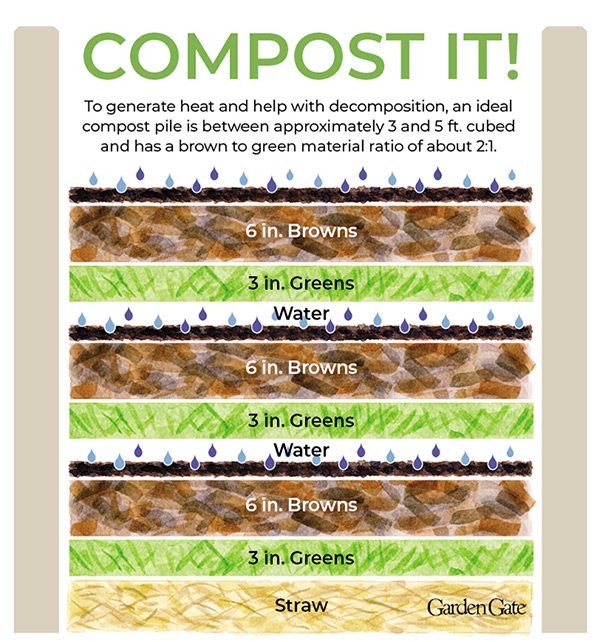
How big should your garden compost pile be?
A really large compost pile is hard to manage and turn easily, so it is better to have multiple smaller piles or bins. But go too small and your compost pile doesn’t have enough material to stay moist and properly heat and decompose. Between 3 to 5 feet in length, width and depth is the ideal size for a compost pile.
A composting bin can be smaller. Since materials are contained and easily mixed, they are less likely to dry out on the edges. An insulated bin, such as HOTBIN, heats easily and uses high temperatures to accelerate bacterial activity and decomposition so you can have finished compost much quicker than you would in a larger open pile.
When to cover your garden compost
You don’t have to cover a compost pile if you simply create a pile that slowly breaks down over time without heating up or being turned (passive composting). However, if it has been raining a lot, you may want to cover the pile to avoid getting it too wet, which will make it slimy and stinky. A cover will also provide insulation to keep your pile composting after temps drop in the fall and will protect it if animals are prone to digging there for kitchen scraps. A good cover is loosely placed a few inches above the pile so air can still move through the materials. It can be just a tarp, or a wooden lid on your bin. If it inhibits rainfall, make sure to check the pile periodically and water it if it gets dry.
Most composting bins have lids that help keep temperatures up and excess moisture and pests out.
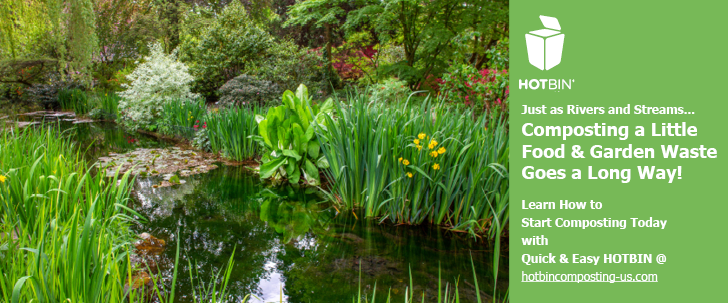
How hot should my garden compost pile get?
Decomposition can start at just 50 degrees F, so compost can be forming even in cool temperatures. Even if the pile never gets hot, you’ll still get usable compost; it just depends on how you’d like to use the end product. There are two kinds of composting methods, and both composting methods will add organic matter to the soil and are equally valuable as compost in their own ways.
Active managed, or hot, compost should reach temperatures of 130 to 150 degrees F so it will destroy weed seeds and diseases, will break down faster, be finer textured, and have more nutrient value as a fertilizer mixed in with soil or potting mix. If the pile gets as hot as 170 degrees F, it can harm helpful bacteria and microorganisms, so turn the pile to help cool it down. Insulated composting bins, such as HOTBIN, are designed to maintain hot composting temperatures and can produce garden compost more quickly.
If it looks like your active compost pile is steaming, that’s normal because the compost pile is warmer than the air temperature around the pile. It is extremely rare for a home compost pile to get hot enough to combust; the pile would have to reach at least 300 degrees F and be poorly mixed, with parts of the pile too wet (creating anaerobic conditions that produce methane gas), along with pockets of dry, combustible materials. A healthy open compost pile should be uniformly as moist as a wrung-out sponge. Turn the pile and add water if it is too dry; turn the pile to air it out if it is too wet. If you use a purchased compost bin, you'll want to read the instructions to be sure you maintain the proper moisture levels for that particular system.
Passive, or inactive, compost does not heat up enough to kill pathogens or seeds, is usually chunkier and still identifiable as the source material and is better as a mulch or top-dressing to the garden, since the slower breakdown causes nutrients to leach out.
Compostable Products You Might Like:
Compostable Trash Bags
Compostable Toothbrush
Compostable Cleaning Wipes

How often should you turn a compost pile?
How often you turn the compost depends on what kind of compost you would like to have. An active compost pile should be turned every 3 to 6 days to keep air moving through the pile and to be sure it is moist. This mixes the materials thoroughly and gets debris on the outer edges incorporated into the middle, where most of the decomposition happens. It also makes sure the pile will heat, which will create a finished, usable product in the shortest time possible. If you never turn the pile, it won’t get as hot, so weed seeds and plant diseases won’t be killed. It will take longer for a passive compost pile like this to break down, so finished compost won’t be available to use for at least a year. Even in a passive composting method, an occasional turning helps mix the materials for a better end result.
What to do if your garden compost smells bad
After you add fresh kitchen waste, you may notice some odor, like rotting fruit. This may also attract flies or other critters looking for an interesting meal. Cover the kitchen waste with a layer of browns like dried leaves or grass clippings, shredded paper or cardboard, or even garden soil. A compost pile will also smell funky, like rotten eggs, if it has gotten too wet. When this happens, turn the pile to get air circulating, while adding more browns to the pile to soak up excess moisture and balance the green to brown ratio.
How to get ground wasps out of garden compost
Ground-nesting wasps may take up residence in an undisturbed compost pile if it gets too dry, so the best way to prevent this is to turn the pile regularly (covering fresh kitchen waste with dry leaves or grass clippings as you add it) and maintain moist conditions that heat up the pile enough that they won’t find it habitable. If you notice wasps flying in and out of the pile and suspect there is a nest, soak the pile with water. Keeping it really wet for about a week will encourage the insects to leave. Watch for several days to see if you notice any more wasp activity, and when you are sure they’re gone, then start turning the pile as before. You can also wait until winter when they have died off, then stir up the pile. These strategies also work to discourage mice from invading a compost pile.
You Might Also Like:
Organic Yellow Jacket Control
5 Home Remedies for Fungal Diseases in the Garden
7 Common Garden Pests
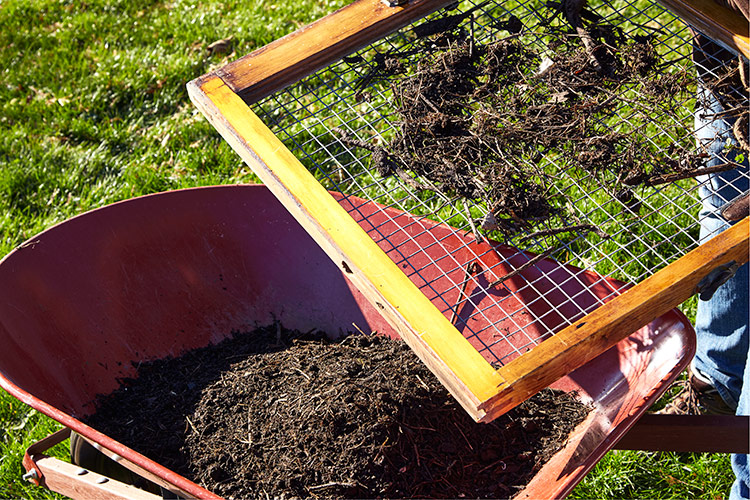
How to tell when garden compost is ready to use
Finished compost will be dark brown, crumbly and have an earthy smell. Compost from an active, hot pile will have cooled. Almost all of the raw materials should be broken down and unrecognizable, though an occasional leaf, stem or fruit pit may still be intact. When your compost looks finished, shovel it onto a screen, like you see above, to separate out large pieces, tossing them back onto the pile to finish. These pieces will contain microbes to help kickstart the new pile, so adding a bit of finished compost to the new materials is always a good idea.
How long it takes depends on the kind of composting you are doing. HOTBIN composters and other compost bins that flip or spin can churn out usable compost in as little as 2 months because they can be turned often and generate heat to break down smaller quantities of materials faster. Active heat-producing compost piles can be ready in less than 6 months. Large, passive compost piles will take longer, up to 2 years, for good-quality compost.
Composting Products You Might Like:
Compost Starter
Compost Collection Crock
Compost Turning Tool
To learn more about how to produce garden compost quickly with HOTBIN Composters, visit Hotbincomposting-us.com








